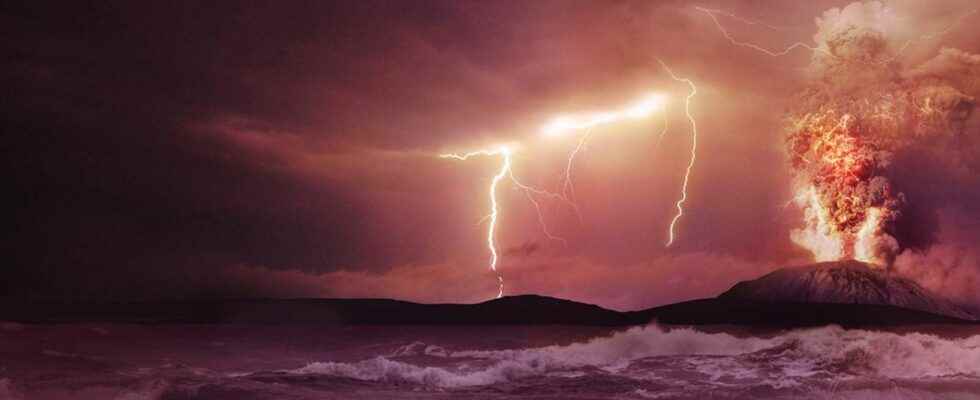You will also be interested
[EN VIDÉO] Life on Earth: the role of the young Sun The Sun is one of the major players in the appearance of life on Earth. And it was probably the incredibly energetic solar flares that shook it in the first million years of its life that brought our planet the energy necessary for our emergence.
Today, the earth’s crust breaks down into two main groups: the ocean crust and the continental crust. But this has not always been the case. Immediately after his formation, primitive earth was very different and its internal architecture was then not as clear as today, with a coat topped with a crust. This differentiation was in fact gradually established from the ocean of magma which then occupied the earth’s surface.
The processes that led to the establishment of the first continental crust are complex and still poorly understood, in part because of the extremely limited number of geological records dating back more than 4 billion years.
Zircons to go back in time
Most studies are based on the analysis of tiny minerals called zircons to date the age of the first continental crust and attempt to understand its formation and composition. These minerals have the particularity of forming at the time of the genesis of plutonic rocks Of type graniterich in silica and characteristics of the composition of the continental crust. Their big resistance to erosion, pressure and temperature means that some zircons formed more than 4 billion years ago can still be found today. The oldest zircons therefore bear witness to the formation of the first continental crust.
Very old zircons, however, are not found just anywhere. You have to look for them in very specific areas called cratons. Cratons indeed preserve the oldest continental rock fragments that can be found on the surface of the planet. The Craton archaean of Yilgarn, in Western Australia, is thus known to be composed of continental crust over 3.7 billion years old. Among these rocks, the oldest zircons were found, dating back 4.4 billion yearswhich is almost the age of the Earth!
100,000 km2 of continental proto-crust hidden beneath Australia
Researchers have thus analyzed zircons found in very old sediments resulting from the erosion of the crystalline rocks of this craton. The study of isotopes U-Pb (Uranium-Lead) and Lu-Hf (Lutetium-hafnium) made it possible to constrain the age of these zircons and to reconstruct the evolution of the crust forming the Yilgarn craton today. The results, published in the journal Terra Nova, show that this remnant of proto-crust would be around 4 billion years old. It would even currently remain some 100,000 km2 of this old crust under the western part of the craton, outcropping at the level of the Narryer terrane. This estimate was made by analyzing the gravity signature of the subsoil in this region. This proto-crust appears indeed to be very thick and dense, characteristics physical particularly associated with his age.
By comparing these geochemical data with those of other cratons identified on the globe, the researchers show that this proto-crust currently located in Australia was certainly part of a much larger whole. For 2 billion years, this primitive continental crust would have undergone multiple episodes of mergersuggesting a process of continental growth very early in Earth’s history.
This suggests a significant change in the planet’s geodynamics 4 billion years ago. As the meteor bombardment begins to lessen, the crust then appears to stabilize, allowing life on Earth to slowly establish itself.
These results could be of particular use to scientists looking forexoplanets where life might have developed.
Reading ideas for the summer with Futura?
To celebrate the start of the holidays, we offer you the Mag Futura at the preferential price of 15 € instead of 19 €, i.e. a reduction of 20% !
What is Mag Futura?
- Our first paper journal of more than 200 pages to make science accessible to as many people as possible
- 4 major scientific questions for 2022, from the Earth to the Moon
- Home delivery*
*Special offer valid until July 19. Delivery is made in France (excluding metropolitan France), Switzerland, Belgium.
Interested in what you just read?
